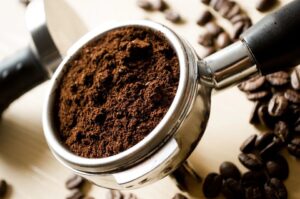 Coffee isn’t just a drink it is a lifestyle, and in many ways, a cultural phenomenon that shapes the way we work, socialize, and even think. From the Instagram worthy cafés of New York to the drive-thru coffee shacks in small towns, coffee in the U.S. has taken on a life of its own. But how did we get here? And how does America’s coffee culture compare to the rich traditions of coffee around the world? Let’s take a journey through time, from the first sip of coffee to today’s oat milk lavender honey lattes and see where we stand in the global coffee scene.
Coffee isn’t just a drink it is a lifestyle, and in many ways, a cultural phenomenon that shapes the way we work, socialize, and even think. From the Instagram worthy cafés of New York to the drive-thru coffee shacks in small towns, coffee in the U.S. has taken on a life of its own. But how did we get here? And how does America’s coffee culture compare to the rich traditions of coffee around the world? Let’s take a journey through time, from the first sip of coffee to today’s oat milk lavender honey lattes and see where we stand in the global coffee scene.
History of Coffee in America
Believe it or not, America wasn’t always a coffee drinking nation. Back in the 1600s, tea was actually the drink of choice. That is until the Boston Tea Party in 1773, and suddenly drinking tea felt like siding with the enemy. Coffee became the patriotic choice, and just like that, it took over as the go to caffeine fix. At first, American coffee was very basic. Consumers brewed their coffee at home, and coffee shops were more about business meetings than cozy catch ups and social events. However, as time went on, coffee started making its mark not just as a drink but as a cultural and daily staple.
 Fast forward to the early 1900s, and coffee was everywhere, especially in local diners. Picture the classic bottomless cup of black coffee served in ceramic mugs alongside a plate of bacon and eggs. No fancy syrups, no steamed milk art, just a good reliable drip coffee. Then came the invention of instant coffee, a game changer, for better or worse. It was cheap, easy, and became a staple in American households, especially during World War II when soldiers relied on it for a quick caffeine fix.
Fast forward to the early 1900s, and coffee was everywhere, especially in local diners. Picture the classic bottomless cup of black coffee served in ceramic mugs alongside a plate of bacon and eggs. No fancy syrups, no steamed milk art, just a good reliable drip coffee. Then came the invention of instant coffee, a game changer, for better or worse. It was cheap, easy, and became a staple in American households, especially during World War II when soldiers relied on it for a quick caffeine fix.
But the real cultural shift? The “coffee break.” Thanks to a mix of labor laws and corporate culture, businesses encouraged employees to take coffee breaks, making caffeine a productivity booster rather than just a morning ritual. The idea of coffee as fuel, something to keep you going rather than something to savor became a key part of American coffee culture.
Espresso, Lattes, and Coffee as an Experience
 The 1970s and ‘80s brought the rise of specialty coffee, and one name in particular changed the game: Starbucks. Inspired by Italian espresso bars, Starbucks introduced Americans to a whole new world of coffee, lattes, cappuccinos, mochas, and the now iconic Frappuccino. Suddenly, coffee wasn’t just something you drank at home or at work, it was an experience. Coffee shops became social hubs, a place to hang out, work, or just enjoy a good book. And with Starbucks popping up on every corner, coffee became part of American pop culture. This is also when coffee got more unique and fancier. Artisanal roasters and boutique coffee shops started focusing on single origin beans, pour over methods, and flavor profiles. Words like “notes of citrus”, and “hint of chocolate” became part of everyday coffee talk.
The 1970s and ‘80s brought the rise of specialty coffee, and one name in particular changed the game: Starbucks. Inspired by Italian espresso bars, Starbucks introduced Americans to a whole new world of coffee, lattes, cappuccinos, mochas, and the now iconic Frappuccino. Suddenly, coffee wasn’t just something you drank at home or at work, it was an experience. Coffee shops became social hubs, a place to hang out, work, or just enjoy a good book. And with Starbucks popping up on every corner, coffee became part of American pop culture. This is also when coffee got more unique and fancier. Artisanal roasters and boutique coffee shops started focusing on single origin beans, pour over methods, and flavor profiles. Words like “notes of citrus”, and “hint of chocolate” became part of everyday coffee talk.
The Modern Coffee Scene
These days, coffee in the U.S. is more diverse than ever. Cold brew has taken over as the smooth, trendy alternative to iced coffee. Oat milk lattes and matcha espresso drinks dominate Instagram feeds. And thanks to social media, coffee trends spread like wildfire. One minute, everyone’s making whipped coffee, and the next, it’s all about espresso martinis. The rise of local  and third-wave coffee shops has also brought a new level of coffee preference and expectations. People care about where their beans come from, how they’re roasted, and whether their barista can pull the perfect shot of espresso. However, at the same time, drive-thru coffee culture is booming. Chains like Dutch Bros and PJ’s have made coffee ultra-accessible, blending quality with convenience. Whether you’re sipping a iced mocha or a caramel cold brew on the go, there’s a coffee drink for everyone.
and third-wave coffee shops has also brought a new level of coffee preference and expectations. People care about where their beans come from, how they’re roasted, and whether their barista can pull the perfect shot of espresso. However, at the same time, drive-thru coffee culture is booming. Chains like Dutch Bros and PJ’s have made coffee ultra-accessible, blending quality with convenience. Whether you’re sipping a iced mocha or a caramel cold brew on the go, there’s a coffee drink for everyone.
How Does American Coffee Culture Compare to the Rest of the World?
While the U.S. has its own unique coffee culture, it’s definitely influenced by the way other countries do coffee.
Italy
If you walk into an Italian café and order a caramel macchiato, be prepared for some side-eyes. Italians take their espresso seriously. No syrups, no giant to-go cups, just small, strong shots of espresso. And cappuccinos? Strictly a morning drink. If you try to order one after lunch, people might assume you’re a tourist.
France
In France, coffee is more about the experience than the caffeine rush. A café au lait (coffee with steamed milk) is a breakfast staple, often paired with a croissant. And rather than grabbing a to-go cup, people tend to sip their coffee slowly at sidewalk cafés and enjoy the moment.
Japan
Japan has taken coffee culture to an entirely new level. From efficient vending machines that serve hot canned coffee to futuristic pour-over techniques in specialty cafés, coffee in Japan is all about craftsmanship.
Australia
Australia’s coffee culture is all about quality. There’s no Starbucks takeover here. Local cafés dominate, serving expertly crafted flat whites and long blacks. Aussies take pride in their coffee, and baristas are often trained to perfect every single pour.
Scandinavia
Scandinavian countries, especially Sweden and Finland, have a deep-rooted coffee culture centered around “fika,” a daily coffee break meant to slow down and enjoy a moment with friends or family. Their coffee is usually strong, black, and often paired with a sweet pastry like a cinnamon bun.
The Verdict
 The U.S. has one of the most diverse and ever-changing coffee cultures in the world. While we might not have the deep-rooted traditions of Italy or the precision of Japan, we make up for it with creativity and innovation. Our coffee scene is constantly evolving by blending influences from around the world, embracing new brewing techniques, and always finding ways to make coffee more fun and Instagrammable. At the end of the day, whether you’re sipping a classic diner coffee, a locally roasted latte, or a giant cold brew loaded with whipped cream, coffee in America is whatever you want it to be, and that’s what makes it so great. Cheers!
The U.S. has one of the most diverse and ever-changing coffee cultures in the world. While we might not have the deep-rooted traditions of Italy or the precision of Japan, we make up for it with creativity and innovation. Our coffee scene is constantly evolving by blending influences from around the world, embracing new brewing techniques, and always finding ways to make coffee more fun and Instagrammable. At the end of the day, whether you’re sipping a classic diner coffee, a locally roasted latte, or a giant cold brew loaded with whipped cream, coffee in America is whatever you want it to be, and that’s what makes it so great. Cheers!
Resources:
Alzain, Mohammed. “Brewing the Future: The Evolution of Coffee Shops and What’s Ahead.” Forbes, Forbes Magazine, 17 Dec. 2024, www.forbes.com/councils/forbesbusinesscouncil/2024/12/17/brewing-the-future-the-evolution-of-coffee-shops-and-whats-ahead/.
Bertinetti, Roberto. “The Evolution of Coffee Culture: From Bean to Cup to Lifestyle.” Hospitality News & Business Insights by EHL, EHL Holding SA, 12 Jan. 2024, hospitalityinsights.ehl.edu/coffee-culture.
“Latest News.” Nationwide Coffee, www.nationwidecoffee.co.uk/news/coffee-culture-around-the-world-a-journey-through-global-coffee-traditions. Accessed 31 Mar. 2025.
“The Culture of Coffee, Coffeehouses and Cafes.” The Coffee Buddha, 5 Jan. 2022, www.thecoffeebuddha.com/coffee-culture/.
Categories: Coffee CultureThought Leadership